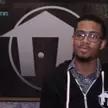When Blizzard first revealed Overwatch 2, it felt a bit silly that the developer was making a brand new game instead of continuously building upon the well-established hero shooter. With nearly identical maps and characters, it felt like there was no need to move on from the original product. However, after the initial PvP Beta for Overwatch 2, we’re coming around on the idea that Overwatch 2 could be a worthwhile sequel.
Where Overwatch 2 immediately differentiates itself from its predecessor is in the change to 5v5 instead of 6v6 PvP. A move that was made in an attempt to limit the use and power of tanks, which simply had too strong of an influence over the meta in the original game, where there were two to a team. Though I was skeptical about lowering the team size as a solution, I found that it actually worked quite well.

Cutting two players from the match meant less over-the-top chaos at every engagement, and allowed a more focused strategy not only when composing my own team, but when figuring out the best method of attack for the opposition. Having one less player on my team meant one less Ultimate at our disposal. Again, it made me give an extra moment of consideration when unleashing my Ultimate. While I don’t think that 6v6 matches were necessarily broken, it feels as though nothing is lost in the jump to 5v5.
While Overwatch 2 features the same characters and maps as the first game, there are reworks and new additions that also set it apart from that original. Take Bastion for example. An absolute force to be reckoned with in Overwatch, the sequel scraps his Self-Repair ability, which previously allowed Bastion to heal himself. It also completely overhauls Bastion’s Ultimate, as he can now change form to a mobile tank as a standard ability.
Bastion isn’t the only Overwatch Hero that gets reworked in the new game. Doomfist has been reclassified as a Tank, a clever move that forces teams to decide if he’s worth passing up on the other dominant characters in that class. Orisa and Sombra also see major changes to their abilities in Overwatch 2.

The Hero rewatches in OW2 not only provide some necessary balancing, but it allows the characters to take on a new role after remaining relatively unchanged for years. It’s neat having renewed interest in Heroes that previously didn’t fit my play style.
Overwatch 2 adds another objective-based mode in Push, which sees opposing teams fighting to move a single objective in either direction. It’s an unexpectedly solid fit in the mode rotation, and the way that momentum can heavily swing back and forth makes it intense when matches get competitive. I’m curious to see how it plays when the pros get it in their hands.

Though in many ways Overwatch 2 may feel like a revamped version of the first game, the closed beta did enough to make it feel like it’s own unique product, which is blatantly obvious if you try to go back to Overwatch 1 after spending several hours in 2. If more unique content and changes are coming in the full release, Overwatch 2 may very well justify its existence as a sequel.
-
Donovan Erskine posted a new article, How Overwatch 2 can become a worthwhile sequel
-
-
-
I mean I've played that version of the game many times since the leaver penalties were so light in ranked :/
And yeah, all games now feel like deathmatch and... Cheap. Not the right word, but I don't know how to describe it. It's just a do as much damage before you die because you're going to die kinda game. It also feels like I game I can play elsewhere and have seen many times before for years.
-
-


